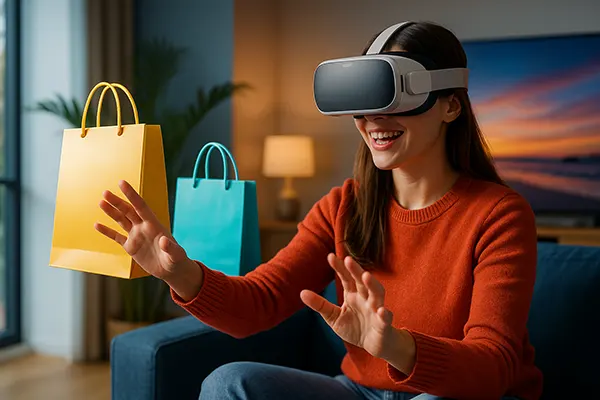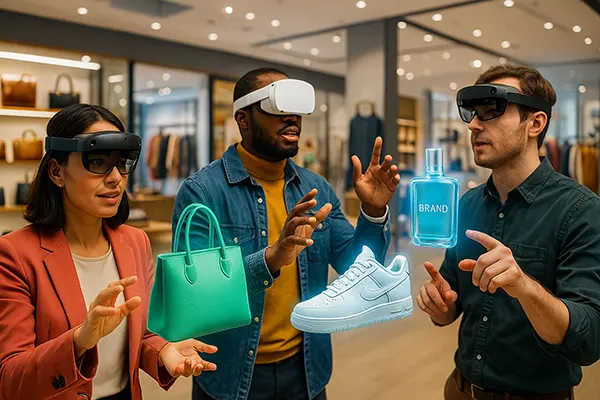
Marketing in Virtual and Augmented Reality: How Brands Can Engage Through AR/VR Experiences
Virtual and augmented reality technologies have evolved from futuristic concepts into practical marketing tools. In 2025, brands across industries are using immersive technologies to create emotional connections, personalise experiences, and bridge the gap between digital and physical interaction. Understanding how AR and VR can be applied strategically helps marketers build stronger engagement and consumer trust.
The Rise of Immersive Technologies in Marketing
AR and VR have become integral to modern marketing strategies due to the widespread availability of headsets, smartphones, and high-speed 5G networks. Businesses now use these technologies not only for entertainment but also to drive customer engagement and purchasing decisions. Retailers, automotive companies, and real estate agencies are among the leaders in this shift, introducing virtual try-ons and 3D tours as part of their sales journeys.
In 2025, the global AR and VR market is estimated to exceed £200 billion, with marketing and advertising accounting for a significant share. This growth demonstrates how immersive media transforms consumer expectations and brand storytelling. Rather than passive viewing, audiences can interact with campaigns in realistic, meaningful ways.
Furthermore, immersive technologies allow companies to collect detailed behavioural data, such as gaze tracking and interaction patterns. These insights enable marketers to optimise campaigns and better understand user motivations, aligning brand messages with real consumer behaviour.
Case Studies of Leading Brands Using AR/VR
Many global brands are already implementing AR and VR to strengthen their customer relationships. For instance, IKEA’s “Place” app lets users visualise furniture in their own homes through augmented reality, improving purchase confidence. Similarly, Nike introduced VR showrooms that allow users to customise and experience new products before release.
Automotive brands such as Audi and BMW have created virtual test drives that replicate real driving conditions. These experiences offer customers an opportunity to explore models from the comfort of their homes, increasing brand affinity without the need for physical dealerships. In hospitality, Marriott Hotels uses VR to let potential guests explore resorts before booking, enhancing decision-making through emotional engagement.
These examples highlight how AR and VR serve as bridges between imagination and reality, reinforcing the emotional side of branding while providing measurable business value. In each case, technology serves not as a novelty, but as a practical instrument of marketing effectiveness.
Consumer Behaviour and the Psychology of Immersion
Immersive experiences influence consumers on a psychological level by stimulating sensory engagement and presence. When individuals feel “inside” the brand environment, their emotional connection and trust increase. This phenomenon—known as embodied cognition—drives stronger recall, positive perception, and intent to purchase.
Studies conducted in 2024–2025 show that interactive campaigns using AR and VR achieve up to 70% higher engagement rates than traditional video advertising. Consumers are more likely to share these experiences on social media, turning brand users into organic promoters. Immersive storytelling also supports brand authenticity by allowing users to experience rather than simply observe marketing messages.
However, to maintain credibility, marketers must ensure transparency and avoid manipulation. Users should understand how data is collected, how AR filters function, and what level of realism is intended. Responsible use of immersive technologies reinforces long-term trust and positions the brand as ethical and forward-thinking.
Designing Ethical and Inclusive AR/VR Campaigns
Ethical considerations are becoming a central aspect of immersive marketing in 2025. Inclusivity, data protection, and psychological comfort are priorities when creating virtual experiences. Designers and marketers are urged to consider accessibility—for example, creating visual options for users with limited vision or adjusting audio for hearing-impaired audiences.
Privacy compliance with global standards such as GDPR and the UK Data Protection Act remains essential. When users share biometric or movement data, brands must clearly communicate how this information is processed and stored. Transparent policies enhance user confidence and prevent reputational risks.
Inclusivity also extends to cultural and social representation. Successful AR/VR marketing respects diversity, ensuring that avatars, environments, and narratives reflect a broad audience. This approach not only aligns with ethical marketing but also increases market reach and brand acceptance worldwide.

The Future of Brand Engagement Through AR and VR
In 2025 and beyond, AR and VR will continue to redefine how brands connect with audiences. The next generation of devices—such as Apple Vision Pro and Meta Quest 3—make immersive experiences more accessible, encouraging mass adoption. Businesses investing early in AR/VR infrastructure are likely to gain competitive advantages in customer retention and experiential innovation.
Emerging trends include mixed reality (MR) campaigns combining real-world and digital elements. For example, fashion retailers use MR to merge live runway events with interactive holograms accessible to global audiences. Such hybrid models demonstrate that immersive marketing can be both experiential and scalable.
Another major direction involves AI-driven personalisation. Artificial intelligence helps adapt AR and VR environments in real time based on user emotions, voice tone, and preferences. This synergy between AI and immersive media creates marketing that feels intuitive, relevant, and human-centred.
Key Recommendations for Marketers in 2025
To succeed in AR and VR marketing, brands should prioritise creativity, authenticity, and technical precision. Begin by identifying clear objectives—whether to raise awareness, increase conversions, or enhance customer loyalty. Integrating immersive campaigns into existing digital ecosystems ensures consistency and measurable results.
Collaboration between marketers, 3D artists, and behavioural scientists is also crucial. This multidisciplinary approach ensures both aesthetic quality and psychological effectiveness. Testing, user feedback, and iterative design are vital to maintaining engagement and accessibility.
Ultimately, the future of marketing lies in meaningful experiences. Brands that use AR and VR responsibly—focusing on value, trust, and inclusivity—will not only capture attention but also build lasting emotional relationships with their audiences.




